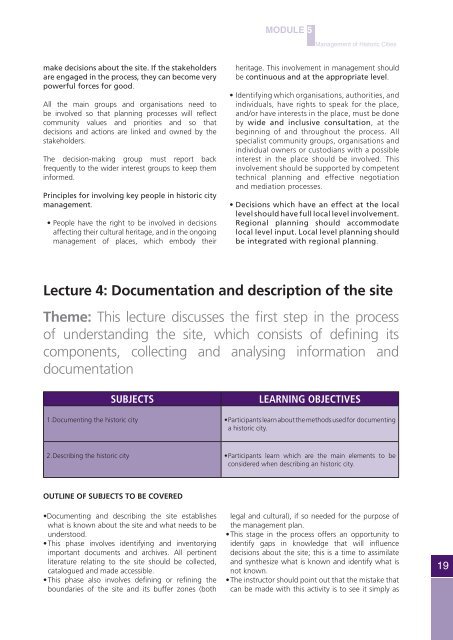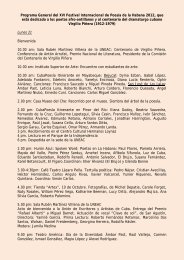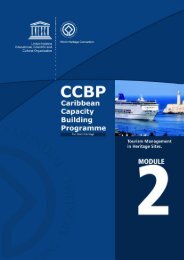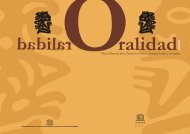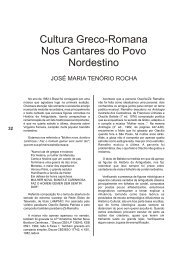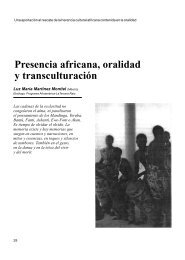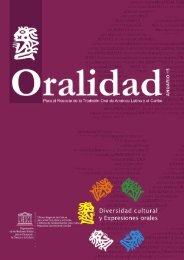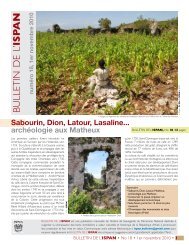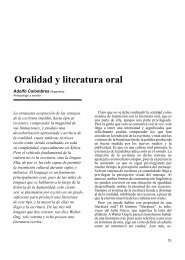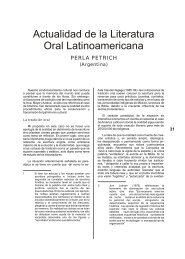Module 5: Management of Historic Cities - UNESCO: World Heritage
Module 5: Management of Historic Cities - UNESCO: World Heritage
Module 5: Management of Historic Cities - UNESCO: World Heritage
You also want an ePaper? Increase the reach of your titles
YUMPU automatically turns print PDFs into web optimized ePapers that Google loves.
MODULE 5<br />
<strong>Management</strong> <strong>of</strong> <strong>Historic</strong> <strong>Cities</strong><br />
make decisions about the site. If the stakeholders<br />
are engaged in the process, they can become very<br />
powerful forces for good.<br />
All the main groups and organisations need to<br />
be involved so that planning processes will reflect<br />
community values and priorities and so that<br />
decisions and actions are linked and owned by the<br />
stakeholders.<br />
The decision-making group must report back<br />
frequently to the wider interest groups to keep them<br />
informed.<br />
Principles for involving key people in historic city<br />
management.<br />
• People have the right to be involved in decisions<br />
affecting their cultural heritage, and in the ongoing<br />
management <strong>of</strong> places, which embody their<br />
heritage. This involvement in management should<br />
be continuous and at the appropriate level.<br />
• Identifying which organisations, authorities, and<br />
individuals, have rights to speak for the place,<br />
and/or have interests in the place, must be done<br />
by wide and inclusive consultation, at the<br />
beginning <strong>of</strong> and throughout the process. All<br />
specialist community groups, organisations and<br />
individual owners or custodians with a possible<br />
interest in the place should be involved. This<br />
involvement should be supported by competent<br />
technical planning and effective negotiation<br />
and mediation processes.<br />
• Decisions which have an effect at the local<br />
level should have full local level involvement.<br />
Regional planning should accommodate<br />
local level input. Local level planning should<br />
be integrated with regional planning.<br />
Lecture 4: Documentation and description <strong>of</strong> the site<br />
Theme: This lecture discusses the first step in the process<br />
<strong>of</strong> understanding the site, which consists <strong>of</strong> defining its<br />
components, collecting and analysing information and<br />
documentation<br />
SUBJECTS<br />
1.Documenting the historic city<br />
LEARNING OBJECTIVES<br />
•• Participants learn about the methods used for documenting<br />
a historic city.<br />
2. Describing the historic city •• Participants learn which are the main elements to be<br />
considered when describing an historic city.<br />
OUTLINE OF SUBJECTS TO BE COVERED<br />
•Documenting and describing the site establishes<br />
what is known about the site and what needs to be<br />
understood.<br />
• This phase involves identifying and inventorying<br />
important documents and archives. All pertinent<br />
literature relating to the site should be collected,<br />
catalogued and made accessible.<br />
• This phase also involves defining or refining the<br />
boundaries <strong>of</strong> the site and its buffer zones (both<br />
legal and cultural), if so needed for the purpose <strong>of</strong><br />
the management plan.<br />
• This stage in the process <strong>of</strong>fers an opportunity to<br />
identify gaps in knowledge that will influence<br />
decisions about the site; this is a time to assimilate<br />
and synthesize what is known and identify what is<br />
not known.<br />
• The instructor should point out that the mistake that<br />
can be made with this activity is to see it simply as<br />
19


